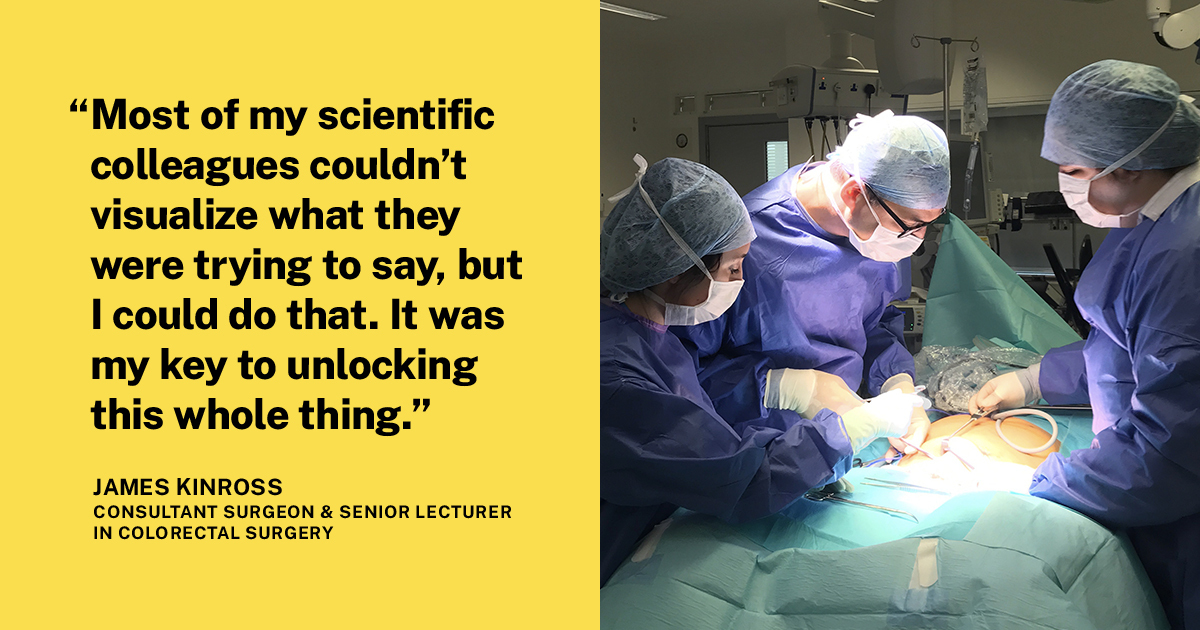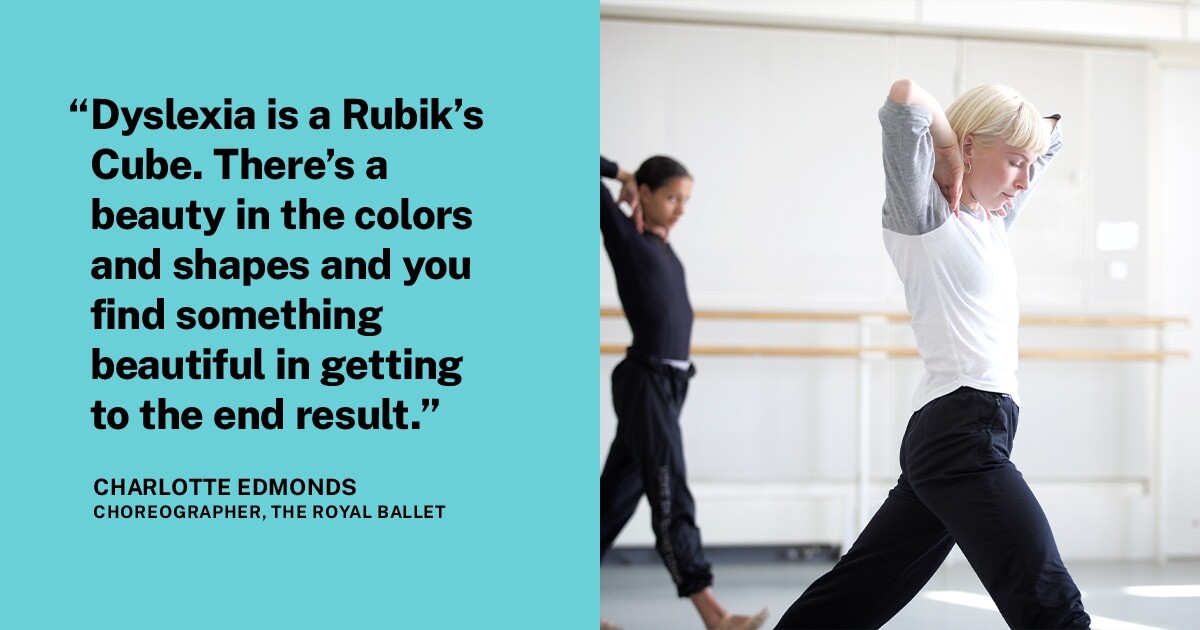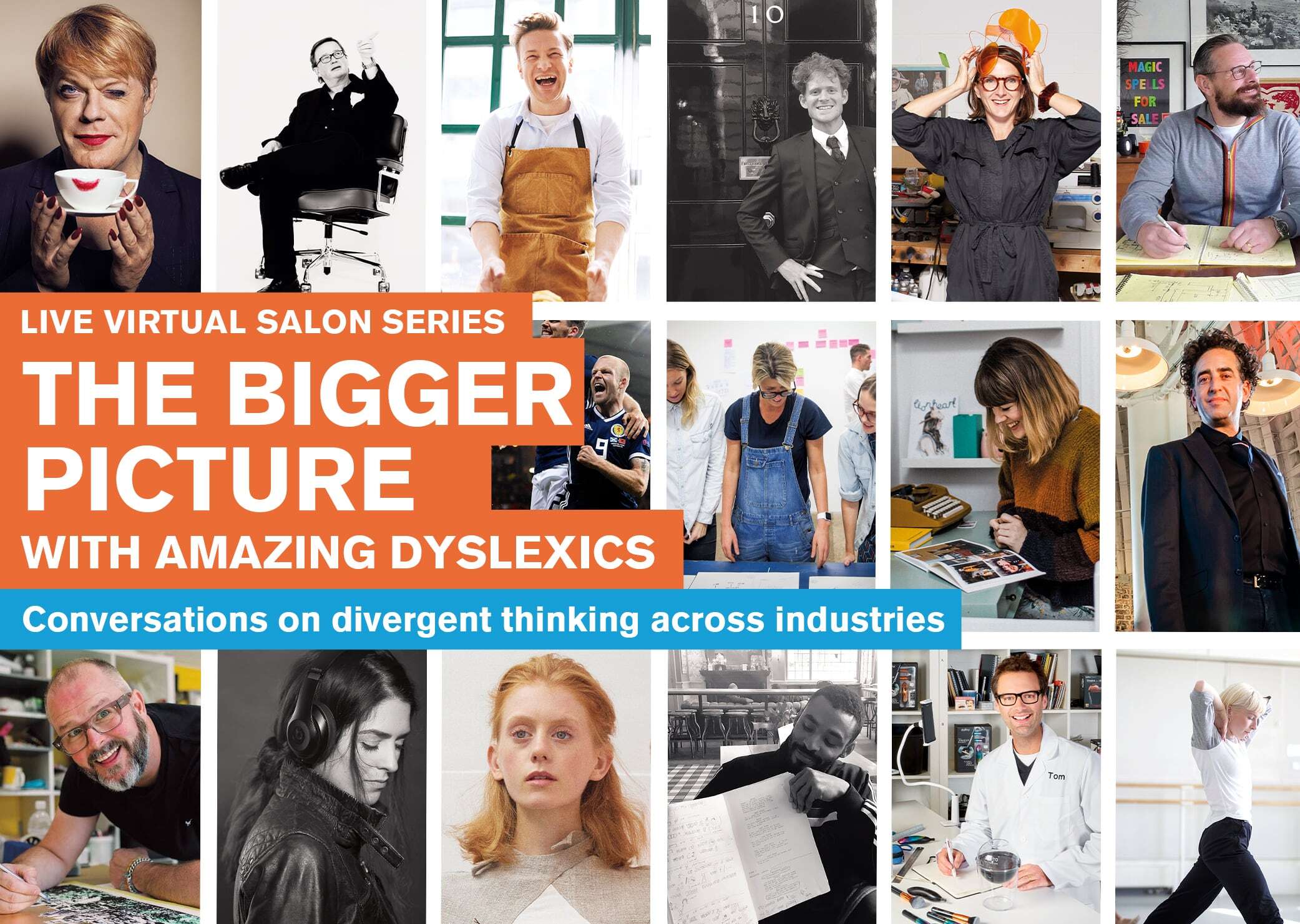
Some see a dance. Choreographer Charlotte Edmonds sees a story of resilience. Some see a bunch of caffeinated freelancers. Entrepreneur Pip Jamieson sees a creative-class movement. Some see a campaign. I see a cultural conversation.
This instinctive ability to zoom out is what has fueled the creativity and careers of many big-picture thinkers. While we differ in what we do and what fields we’re in, we look at the world in remarkably similar ways.
It comes down to a top-down perspective that considers all information as relevant information.
It doesn’t matter if it’s measurement and movement or design and business. To us, nothing is unrelated. This intellectual synthesis is a firehose we direct toward any curiosities and challenges in our paths. It’s also a trait often found among dyslexics like me, which helps propel us to the forefront of our industries.
Recently, an actor, surgeon, researcher and experience designer joined Edmonds, Jamieson and me at a virtual salon to discuss just this. The synergies were often and obvious during “The Bigger Picture Salon with Amazing Dyslexics” (re-watch here), presented by the authors of The Bigger Picture Book of Amazing Dyslexics and the Jobs They Do and Gershoni Creative, my brand-building agency powered by Dyslexic Design Thinking (what’s that?). In our lively discussion, these similarities became clear:
1. We see problems differently.
For every one problem, there are a hundred ways in. We approach problems straight on but we also look at them sideways, backwards, up-close and far away. I do this so often that if I cannot see all the facets of a problem, I know there must be some discord. In the case of a rebrand, I see the creative challenge as a giant sun with a gravitational pull on all the other pieces that orbit it — from packaging to partnerships. For me, it’s all there in a 3-D space. So if there’s no purposeful design or if the values are misaligned, the project falls apart.
Fellow panelist James Kinross shares this tendency. As a consultant surgeon and senior lecturer in colorectal surgery, he uses his ability to explore multiple angles at once to uncover meaning from complex information — a powerful driver for many big-picture thinkers. “Most of my scientific colleagues couldn’t visualize what they were trying to say, but I could do that. It was my key to unlocking this whole thing,” said Kinross, whose work involves mass spectrometry, an analytical tool presented as a plot. “I visualize what does this look like and why? And then it means something.”

2. We make unexpected connections.
In a split second, I can see where ideas come together and where they don’t. This tendency is influenced by many things, especially pattern recognition, trend identification and sentiment alignment. All three play a role in making the kind of nonlinear connections that are common among big-picture thinkers.
Jamieson, who founded the creator network The Dots, built her career on these types of connections. “As a dyslexic, I can spot things no one else does and I love it,” she said. She also admits that she requires a lot of sleep to process all the information she takes in.
3. We see things that aren’t there.
When you think holistically about colors, textures, stories and experiences, you’re bound to land on something that previously didn’t exist — or wasn’t the prevailing theory. Case in point: the distinct movements Edmonds creates as a choreographer for The Royal Ballet. “For me, dyslexia is a Rubik’s Cube,” she said. “There’s a beauty in the colors and shapes, and you find something beautiful in getting to the end result.”

4. We value perseverance.
I’ve learned that the journey yields discovery. This is something our big-picture-thinking panelists also found true, including Dr. Helen Taylor, a researcher at the University of Cambridge. “There’s always a way through for dyslexics. They keep problem-solving and are quite tenacious,” she said. It’s why she blazed a trail with her theory of the evolution of complementary cognition. “It explains how by the origin of our species, humans had evolved to specialize in differing but complementary ways of processing information.”
This sentiment speaks to the heart of why Kate Power and Kathy Iwanczak Forsyth wrote the book that brought the panelists together that day. “Society needs everyone. That’s what we love about Dr. Helen Taylor’s theory,” they remarked.

5. We embrace always-on creativity.
There’s simply not a time when we’re not thinking big. We can be cooking linguine or sailing on a boat and that openness to intersectional ideas remains. There’s not a situation where we say, “Now, let’s start thinking big.” For instance, when a global professional services brand wanted to create a curriculum, my design team at Gershoni shot for the moon. In the end, our client couldn’t believe they got way more than the expected curriculum manual; it was a complete guidance system. That’s what always-on creativity yields. It’s a reminder not to throttle our creativity or save it only for the big projects.
Kinross also related to this constant flow. “My brain is permanently switched on and churning out idea after idea. My problem is: They’re all amazing,” he said, laughing. All of the panelists nodded in solidarity, including actor Lloyd Everitt, who shared the lead on BBC One’s hit show CASUAL+Y. “I’m the opposite (of hyper-focused),” he said.
6. We explore internally and externally.
To notice cross-sections in our work, it’s important to experience different realms in our lives. When not everything is theory, we can better relate and create.
For me, that means balancing my future-thinking branding work with paddleboarding and parenting. Jamieson plants trees on Sundays. And, for Everitt, it’s meditation: “I live in my head and I have to come into my body and into my heart.”
Big-picture thinkers apply these six traits across sectors, ages and skill sets. By experimenting with these ideas, leaders of every kind can start seeing results that are as innovative as they are surprising.
If your focus is more detail-oriented, hire for competencies that complement your own. Find someone with a track record of looking at the world in these ways and partner with them. To get a feel of what it’s like to lean into big-picture thinking or work with someone who does it naturally, watch the salon recording. It’s part of our conversation series on divergent thinking across industries — something this world needs more of from where I sit.
There’s so much we can learn from each other if we just stop insulating ourselves. I’ve found that listening to new perspectives can be just the charge that snaps an idea into place. Tune in to our series and tell me what you think. Spoiler: We’re a lively bunch and full of ideas. And if these big-picture thinkers sound like you, leave us a comment with the trait (above) that propelled your career the most.
_
To read more counterintuitive ideas from one dyslexic creative leader, sign up for the newsletter.
Tell a friend. Do you know big-picture thinkers in your life? Forward this their way and let them know you see their superpower.
Tell me what you’re working on. Tired of settling for the expected? Ready for a new point of view? Start the conversation at hello@gershoni.com.


